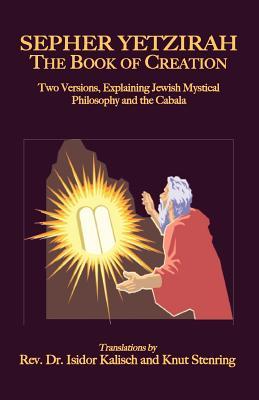This book is considered to be the oldest known Jewish mystical text and is now an important part of Cabalistic studies. It first appeared in historical records during the first century C.E., but its principles had been passed down for centuries before this, with Jewish scholars believing that the patriarch Abraham had received the teachings directly. It is written from the perspective of an observer who is relating the work of God's creation step by step, as it unfolds. It covers not only the creation of the universe, but the formation of the earth and humanity as well. It reveals how the 22 letters of the Hebrew alphabet work symbolically and interact with one another, through God, to bring about our physical world. Most cultures agree that God created the universe, our world and our bodies but many creation stories beyond this one are less complete. By looking deeply at this story and studying its message, one can come away with meaningful insights that will not be available elsewhere. This book is often considered to be a meditative text, focused upon more in the first translation by Kalisch, and also as a magical text, covered more clearly in the second version by Stenring. If something is not made clear in one version it can be likely be found in the other, which is what makes this book so interesting. It is a very powerful mystical work and having access to two separate translations in one volume is of immense importance.

Sepher Yetzirah: The Book of Creation
This book is considered to be the oldest known Jewish mystical text and is now an important part of Cabalistic studies. It first appeared in historical records during the first century C.E., but its principles had been passed down for centuries before this, with Jewish scholars believing that the patriarch Abraham had received the teachings directly. It is written from the perspective of an observer who is relating the work of God's creation step by step, as it unfolds. It covers not only the creation of the universe, but the formation of the earth and humanity as well. It reveals how the 22 letters of the Hebrew alphabet work symbolically and interact with one another, through God, to bring about our physical world. Most cultures agree that God created the universe, our world and our bodies but many creation stories beyond this one are less complete. By looking deeply at this story and studying its message, one can come away with meaningful insights that will not be available elsewhere. This book is often considered to be a meditative text, focused upon more in the first translation by Kalisch, and also as a magical text, covered more clearly in the second version by Stenring. If something is not made clear in one version it can be likely be found in the other, which is what makes this book so interesting. It is a very powerful mystical work and having access to two separate translations in one volume is of immense importance.